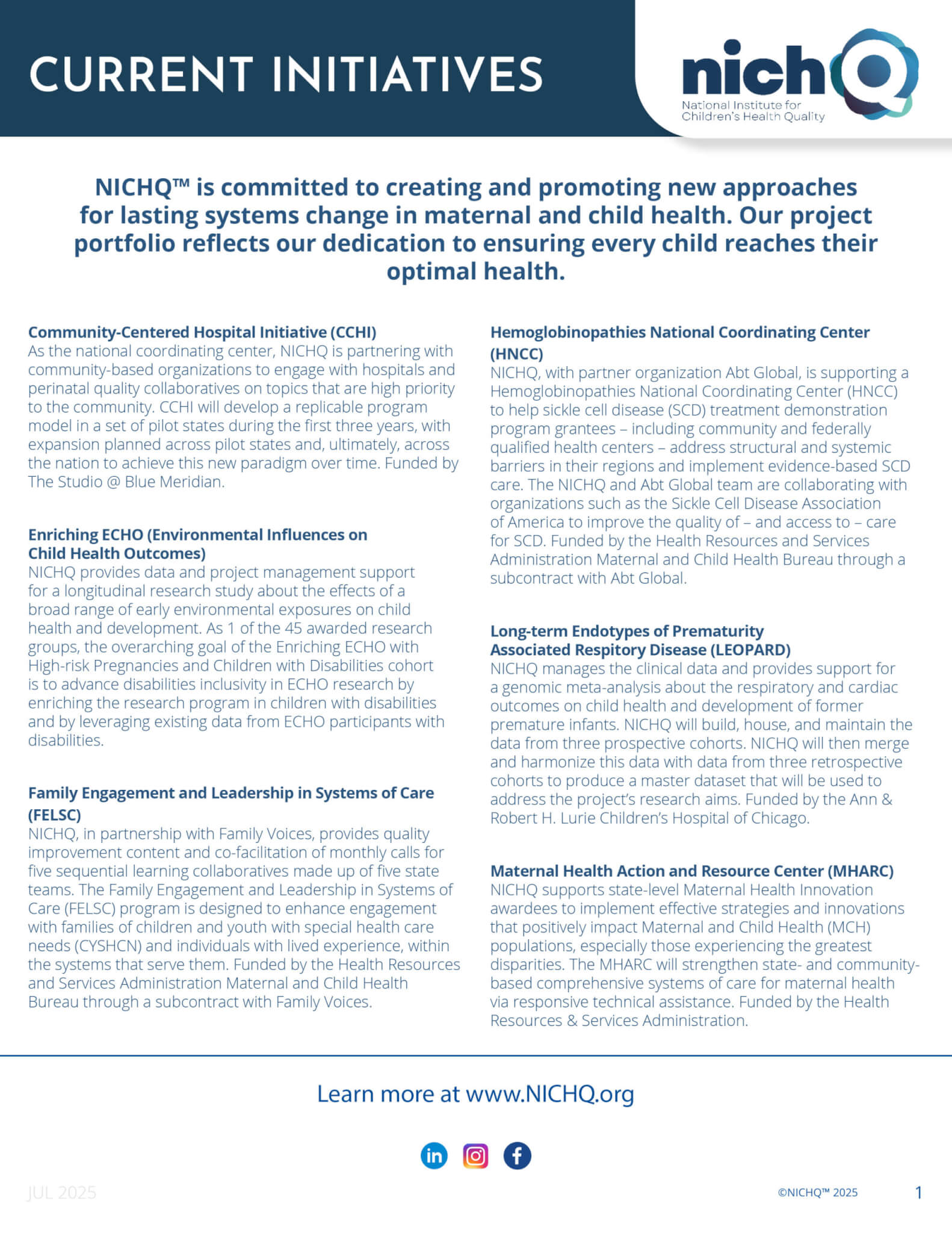Improving Children’s Vision: Systems, Stakeholders & Support
This project aims to increase the detection and diagnosis of visual impairment in children aged five years and younger by enhancing the capacity of state public health agencies to use and apply quality improvement principles and practices to implement universal vision screening for preschool-aged children.

Who
Improvement teams in Arizona, Ohio, and Wyoming
Our Role
Facilitate a virtual, modified Breakthrough Series learning collaborative to jointly identify challenges, interventions, implementation and measurement related to implementing universal vision screening for preschool-aged children.
Funder
The project is funded by the Health Resources and Services Administration Maternal Child Health Bureau and led by the National Center for Children’s Vision and Eye Health and Prevent Blindness.
Project Impact
External Resources
State Perinatal Quality Collaboratives
List of PQCs funded by the Center for Disease Control and Prevention (CDC)
The Power of PQCs
Video showing the impact that PQCs have on the communities they serve. Produced by the NNPQC.
PQCs in the News
Articles in news outlets covering state PQCs, their activities, and the people that work in the collaboratives.
Patient Safety Bundles
From the Alliance for Innovation on Maternal Health. PSBs are collections of evidence-informed best practices that address clinically specific conditions in pregnant and postpartum people. The NNPQC helps provide TA and support to PQCs in adopting the core AIM Perinatal Mental Health Bundle.
Perinatal Quality Collaboratives
The CDC’s landing page for PQCs, including helpful infographics, videos, and links to help explain what PQCs are, how they work, and stories, learnings, and publications that have come out of the state PQCs.
Related Content
Resources produced by the Improving Children’s Vision: Systems, Stakeholders & Support project or on related topics
Meet Our Team
“In our deep organizational work to move along the Equity Systems Continuum from a Savior-Designed System to an Equity-Empowered System, we acknowledge the power of action. The potential is limitless for today’s commitments to improve the systems in which health care and public health professionals work and families receive care.”


